The NTT Group had a booth at CeBIT 2017 for the first time in 12 years in order to introduce digital transformation solutions offered by NTT Group companies, which have been expanding their global business. NTT sought to make the exhibits easy for anyone to understand. For example, it offered interactive demonstrations that enabled visitors to directly appreciate the new value that digitization offers, and presented information and communication technology (ICT) use cases in videos in three languages (English, German, and Japanese) to help visitors understand the advantages of selecting the NTT Group as a business partner. The result was an uninterrupted flow of visitors up to the last day, totaling more than 5000 people.
Under the theme “d!conomy – no limits,” which had been adopted since 2015, CeBIT 2017 exhibited the latest ICT technologies such as digital transformation, the Internet of Things (IoT), and artificial intelligence (AI). It is noteworthy that Japan became a partner country in 2017, when German Chancellor Angela Merkel and Japanese Prime Minister Shinzo Abe jointly announced the Hanover Declaration, under which the two countries agreed to jointly formulate international standards and undertake research and development (R&D) in cutting-edge technologies such as IoT and AI. The declaration acknowledged Japan’s open stance regarding the use of technology as one area in which Germany considers Japan to be outstanding. NTT, for its part, exhibited a number of trailblazing uses of ICT in areas where ICT had been slow to penetrate, such as sports and culture. The company believes that through its CeBIT exhibits, it was able to demonstrate the group’s ability to provide a wide range of technologies, not limited to telecommunications.
The NTT Group exhibited at several sites, including the business security zone and partner booths. The largest site was the NTT Group booth inside the Japan Pavilion. Exhibited there were new work- and life-styles made possible through the use of ICT, including path-forging activities in areas that are attractive to many people, such as sports and culture, and broad-ranging activities that cut across a variety of industries supporting Japan’s economy [1]. This article introduces the NTT Group’s major exhibits.
2.1 Sports zone
The NTT Group is pursuing digital transformation, even in fields where the human senses play important roles such as sports.
(1) Application of IoT to sports
For the last two years, Dimension Data, one of the NTT Group integrators, has been providing a service for participants in bicycle races. The service offers various kinds of data based on the position of the user’s bicycle, which are obtained from a GPS (global positioning system) device installed under the bicycle saddle. For example, it can provide information about the cyclist such as his/her speed, altitude, and exact position on a map, as well as strategic data for team management such as distances between competitors. The provision of such information during live coverage of bicycle races has enhanced the realistic sensations experienced by viewers watching the television (TV) coverage of the event. Dimension Data is considering expanding the service to include transmission of the physical conditions of cyclists, for example, the degree of fatigue, in real time using sensors installed in their clothing (Photo 1).
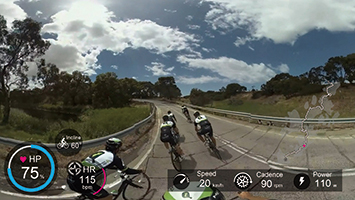
Photo 1. Real-time sensing of cyclists’ physical conditions.
This will be made possible through the use of the wearable sensing fabric “hitoe,” which is developed jointly by NTT and Toray Industries, Inc. The fabric can be woven into a uniform so that accurate cardiogram and electromyogram data can be obtained without causing any discomfort to the wearer. Thus, the physical condition of a cyclist can be measured even during a race. We believe that, if TV watchers can understand the physical status of cyclists while watching live race coverage, they can develop a sense of unity with individual racers and become more emotionally engaged with the athletes.
At CeBIT 2017, the presenter himself wore a shirt made of “hitoe” and demonstrated that, while cycling, he was able to check his heart rate and degree of fatigue on a bicycle-mounted smartphone. When NTT President Hiroo Unoura introduced this bicycle to Chancellor Merkel and Prime Minister Abe, who are both sports enthusiasts, they showed keen interest (Photo 2).
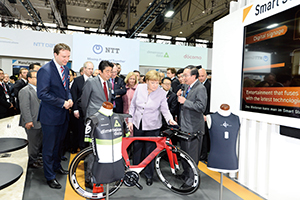
Photo 2. NTT President Unoura (right) introduces “hitoe” technology to Chancellor Merkel and Prime Minister Abe.
Shirts made of “hitoe” have also been worn by drivers participating in car races such as the Indy 500. The drivers have highly praised the shirts, noting that they allowed the drivers to determine what kind of driving practice they needed to do, because they were able to easily and objectively monitor their physical states. (Photo 3)
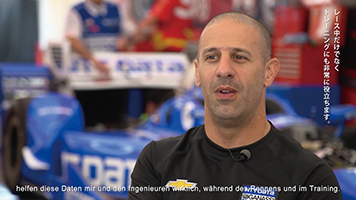
Photo 3. Indy 500 race driver Tony Kanaan praises his “hitoe” shirt.
(2) Smart Stadium
NTT also exhibited a Smart Stadium, in which ICT provides new value for spectators at sports events. In this exhibit, a VIP (very important person) room at a stadium was recreated, where the user could order a meal or replay a scene using a tablet connected to the Internet via Wi-Fi*1. This enabled the user to watch a game with the sensation of being in a real stadium while feeling as relaxed as he/she would be when watching TV at home (Photo 4). In addition, in cooperation with Panasonic Corporation, NTT exhibited augmented reality (AR), which was achieved by presenting translucent information on the glass windows of the VIP room. This enables spectators of a game to see information overlaid on the real field that is conventionally only available on TV, such as detailed information about their favorite players, team formations, or the off-side line (Photo 5). Visitors commented that this would make their watching of a game at a stadium even more enjoyable.
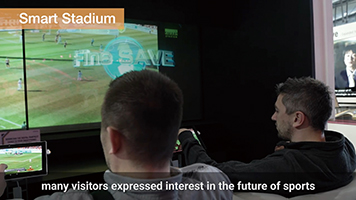
Photo 4. Smart Stadium solution enables spectators to watch a game with the sensation of being in a real stadium.
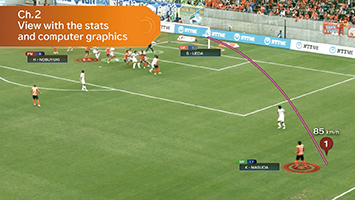
Photo 5. Smart Stadium solution enables spectators in a VIP room to see information on the glass windows overlaid on the real field.
(3) Sports VR
Virtual reality (VR) technology enables the user to take on the perspective of a player on the field. At the NTT booth, visitors were able to experience the sensation of a goalkeeper fielding the ball from a penalty kick by a J-League (Japan Professional Football League) player. They had a high sense of immersion in this experience because not only did they have visual experience through head-mounted displays, but they also wore vibrating devices on their hands and abdomens, which generated vibrations when the virtual ball was received. This proved to be a very popular exhibit. A Euronews correspondent reported enthusiastically on this technology (Photo 6).
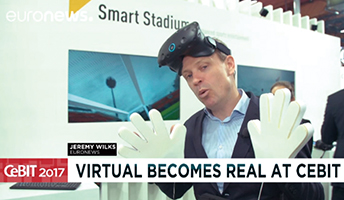
Photo 6. �Visitors experienced the sensation of a goalkeeper enabled by VR technology.
2.2 Culture (Human Heritage) zone
The NTT Group is also working towards digital transformation through ICT in the area of culture.
(1) Digital archive
In cooperation with the Vatican Apostolic Library, NTT DATA is digitizing the library’s valuable manuscripts for preservation. At CeBIT 2017, NTT displayed a huge bible borrowed from the library and its digitally archived version in parallel. Visitors were able to experience a situation in which they could read the bible on a digital display at any time while looking at the precious real bible alongside. A video showing the painstaking process of archiving was also presented so that visitors could appreciate the significance of this activity. The activity was highly appreciated by those concerned with libraries.
(2) Cultural experience
NTT is experimenting with providing new experiences by fusing kabuki, one of the Japanese performing arts, and ICT. It conducted a demonstration in which ICT was used to enable visitors to experience kumadori, an unusual style of stage makeup used in kabuki, in which vividly colored makeup is applied to an actor’s face. In the demonstration, makeup was not applied to the visitor’s face with a real brush. Instead, NTT’s angle-free object search technology was used to apply kumadori on an image of his/her face displayed on the screen so that visitors could experience the world of kabuki without discomfort. Specifically, the angle-free object search technology automatically detects the type of mask chosen regardless of the mask’s angle. It then uses AR to overlay kumadori on the person’s face shown on a display like a mirror, in such a way that the makeup appears to adhere to the face, even when the subject changes his/her facial expression or direction, giving the realistic impression that the cosmetics are actually applied. Those visitors who were well versed in kabuki enjoyed making defiant expressions or gestures with kumadori on their faces, just as if they were actors (Photo 7).
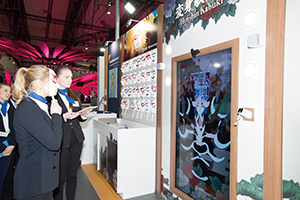
Photo 7. Visitors enjoyed having kabuki makeup on their face shown on the screen.
(3) Proposal for new culture
At CeBIT 2017, NTT collaborated with Tokyo National University of Fine Arts and Music in a demonstration of the use of a moving shade to provide an impression of movement of a self-portrait of Vincent van Gogh. Light projection technology known as HenGenTou (Deformation Lamp) created an illusion that the famous painter was eating something. This was an unusual display that could be understood intuitively without the need for explanation, and many visitors stopped and stared in surprise. The Deformation Lamp demonstration attracted a lot of interest, especially from those concerned with art museums as a way to give fresh, dramatic impact to paintings on display.
2.3 Cross Industry Collaborations zone
While manufacturing has traditionally played a central role in Japan’s economic development, NTT believes that Japan’s high-quality agricultural products and infrastructure services such as its well-developed public transportation systems are playing a larger role in this regard and have become globally competitive in recent years.
In Europe, there are many people running large-scale farms. Visitors from the agricultural field studied NTT’s exhibit that showed solutions to several important agricultural issues such as the optimum timing of sowing. In the field of manufacturing, NTT showed a video and exhibited robots from FANUC Corporation. Visitors showed great interest in the precise movements of the robots and real-time analysis of manufacturing conditions made possible by edge computing. In the field of transportation, NTT’s exhibit on the use of “hitoe” to support safe driving attracted a lot of interest (Photo 8).
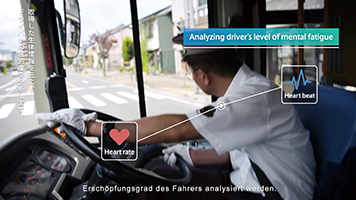
Photo 8. The use of “hitoe” to support safe driving.
Thus, the NTT Group is working to create new value in collaboration with customers by providing ICT across different industrial fields. Videos of the use cases presented at CeBIT 2017 have been posted on YouTube*2 [2].
2.4 Responses within the NTT Group
The activities introduced above garnered appreciation from employees of the NTT Group’s overseas subsidiaries:
“I think that the Smart Stadium solution provided by NTT R&D was amazing and aligned very nicely with the story of the Tour de France and our sponsorship of Team Dimension Data for Qhubeka. Sport is clearly an interesting attraction for visitors to CeBIT and it brought more people into the stand and allowed us to engage with them. I don’t think many visitors understood that the NTT Group was made up of so many powerful brands (NTT DATA, NTT DOCOMO, NTT Communications, and Dimension Data), and so a visit to the stand certainly provided us with a stage to be able to communicate that message to the many visitors.”—Digital Practice, Dimension Data Group.
“The CeBIT was a fantastic opportunity to show the power of collaboration and solution capacities we have in the NTT Group and to make understandable for so many highly interested visitors what NTT, with all of its powerful brands, can deliver in the era of digitization to help transform society, sports, and industry, as well as creating value for business transformation. From a German perspective of Dimension Data, it absolutely helps to strengthen our brand and awareness in the market, which will also support our business.”—Marketing/PR, Dimension Data Germany.
“The NTT Communications part of the NTT Group presence at CeBIT was dominated by one item—a replica of the 2017 McLaren Honda Formula 1 racing car which gained lots of interest from visitors to the exhibition and helped improve our brand awareness in Germany, especially those who were not familiar with NTT Communications. The Technology Partnership with McLaren Honda began in July 2016, so the exhibition gave us a chance to explain to people how the use of data is transforming F1 and how NTT Communications is playing a part in that transformation by supplying cloud, network, and cloud management functions. Our network connects the McLaren backbone and supports all of their businesses. Our Enterprise Cloud provides increased capacity and reliability for their apps and services which, for example, helps them simulate all kinds of racing conditions. These technologies support McLaren Honda’s efforts to improve performance at each race. Development is continual, and more and more components are being added to the overall solution as we progress. For example, we are developing a race day dashboard for the cloud management platform that will help McLaren’s team to optimize performance. We were also able to discuss our R&D activities that can help improve the experience of fans and the F1 team alike. In one instance, an editor from WIRED magazine was fascinated by the possibility of using “hitoe” for monitoring the pit crew and improving their performance, and he especially enjoyed the Smart Stadium demonstration and the saké that was delivered to him one minute after ordering it!”—Senior Director Marketing, Europe, NTT Communications.
“I was in charge of the exhibition of the communication robot Sota*3 that introduced the NTT Group booth. Many people stopped at the Sota robots, listening to their talks and taking pictures of them. I also got several questions for actual business cases and introduced the solution proposals and proof-of-concepts for elderly people support and bank reception support. Also, supported languages were another frequent question, which indicates customers from various countries are interested in Sota.”—EMEA Innovation Labs, NTT DATA EMEA Ltd.
“For DOCOMO, CeBIT provided a great opportunity to showcase our current and future IoT solutions in the fields of agriculture, manufacturing, and transport. Unlike many mobile-specific events, CeBIT visitors come from a wide range of backgrounds across many industries. This not only enabled us to leverage our exposure across industries, but also gave us an opportunity to gain access to creative new ideas on ways our technology can be applied to tackle real-world issues. It was particularly rewarding to be able to work alongside our sibling companies under the same NTT banner, learning about each other’s business activities and building a mutual sense of camaraderie. I feel grateful for the new friendships I developed, and have no doubt that opportunities like this will create a synergy that can make us even more efficient and dynamic as a group going forward.”—Public Relations Department, NTT DOCOMO, INC.
In addition, we have posted visitor interviews on the official NTT channel on YouTube [2].
| *1 |
Wi-Fi is a registered trademark of Wi-Fi Alliance. |
| *2 |
YouTube is a registered trademark of Google Inc. |
| *3 |
Sota is a registered trademark of Vstone Co., Ltd. |
The NTT Group is proposing a B2B2X (business-to-business-to-X) model for creating new services in collaboration with its customer companies. In particular, with 2020 in mind, the group is seeking to continue to use ICT to create new value in such fields as sports and culture. With a wide range of ICT developed by the group centering on NTT laboratories, the NTT Group is endeavoring to provide new value for its customers and to broaden its business horizons.


















